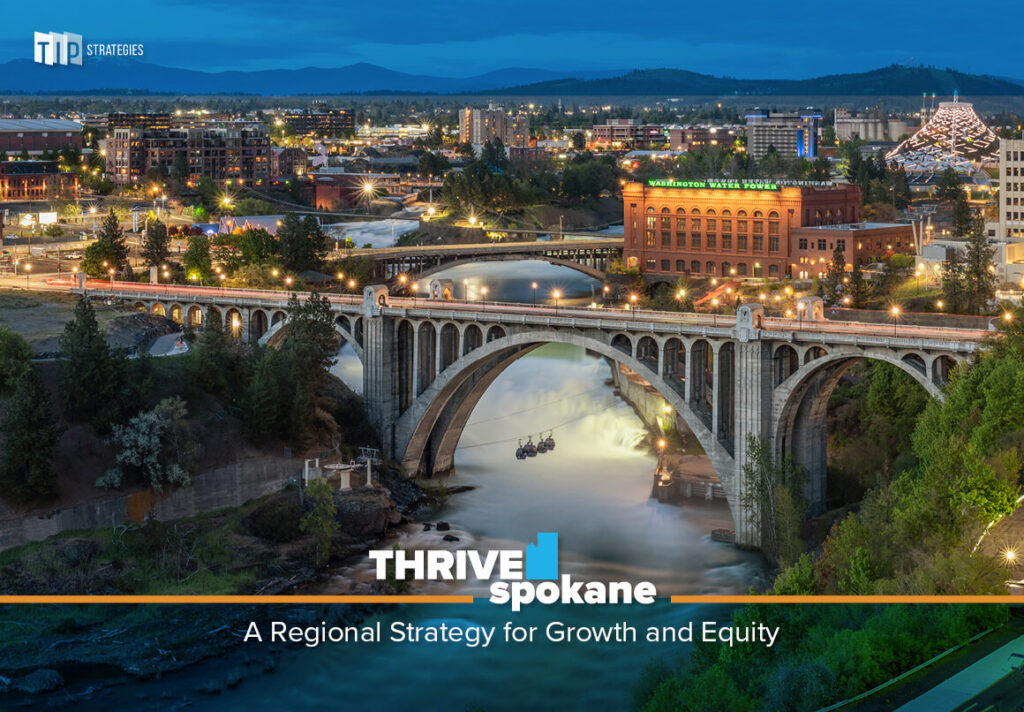This is the second installment of TIP’s series on the CEDS. Building on the initial post, “What is a CEDS, and Why Does it Matter?,” this post explores the question of how a CEDS can bring a region together around a shared vision for the future.
The preparation of a comprehensive economic development strategy (CEDS) requires a community to define its collective vision for future growth and prosperity. This implementation-focused plan is a foundational program of the US Economic Development Administration (EDA) and an important tool for accessing federal funds. It serves as a roadmap that guides long-term investments by identifying and prioritizing a region’s economic development opportunities. Along with providing a forum for region-wide discussions, the CEDS facilitates community building by making intentional connections to other relevant planning initiatives, leveraging diverse areas of expertise, and enabling the collective evaluation of a wide range of projects and initiatives. Because a CEDS is meant to provide a holistic evaluation of barriers and assets, an inclusive planning process is both critical to the effort and required by the EDA.
TIP client Greater Spokane Inc. (GSI) offers an excellent illustration of a successful and inclusive outreach strategy. During its recent CEDS planning process, GSI used several techniques to build community support, starting with the composition of the CEDS committee. Forming a representative committee helps ensure that diverse voices define economic prosperity and build consensus on priority investments. With this purpose in mind, GSI convened a CEDS committee comprised of nearly 40 community leaders representing a variety of interests. Committee members helped coordinate community engagement activities, vetted the plan to ensure its alignment with the regional vision, and made a commitment to implementing the CEDS. The committee was supplemented by a group of more than 60 thought leaders who were brought in at key milestones to provide feedback and guidance based on their unique expertise and lived experiences.
GSI also employed several creative strategies to spur interest in the planning process, starting with a naming contest. CEDS committee members were invited to submit names for the CEDS that represented their vision for the regional economy. The GSI board selected THRIVE Spokane from more than 40 submissions. Throughout the engagement, GSI used traditional media channels (including appearances on Good Morning Spokane and articles in print media), as well as social media events (such as Facebook live streaming and virtual town halls), to keep residents informed and to generate community buy-in. A dedicated page of the GSI website provides an overview of the process, along with links to the final CEDS, data visualizations, and the implementation matrix delivered by TIP.
To facilitate community visioning, a CEDS planning process should also engage organizations and individuals representing an array of interests including small business, workforce development, economic development, education and training, industry sectors, nonprofits, and government. In addition to drawing on the knowledge and experiences of participants, these discussions provide important insights about opportunities and challenges that inform the CEDS. During the THRIVE Spokane planning process, more than 150 individuals participated in meaningful conversations about the region’s future through roundtables, workshops, and interviews, including organizations and communities that had been left out of these conversations in the past. A survey geared towards Spokane County residents prepared by TIP, and made available in multiple languages, generated nearly 1,000 responses that helped craft the CEDS vision statement. A 30-day public comment period also made certain that the community’s wants and needs were adequately incorporated into the final strategy, which was completed in June 2022.
An effective outreach process should lay the groundwork for implementing the CEDS by raising awareness of economic issues and opportunities, increasing buy-in for the identified priorities, recognizing the work of community partners and collaborators, and providing a call to action. Through its broad and inclusive community engagement efforts, GSI is well-positioned for successful implementation of THRIVE Spokane.
TIP consultant Katrina Parkey, CWDP, contributed to the research and writing of this post.
Credit: Cover image of Spokane riverfront courtesy of Visit Spokane.



